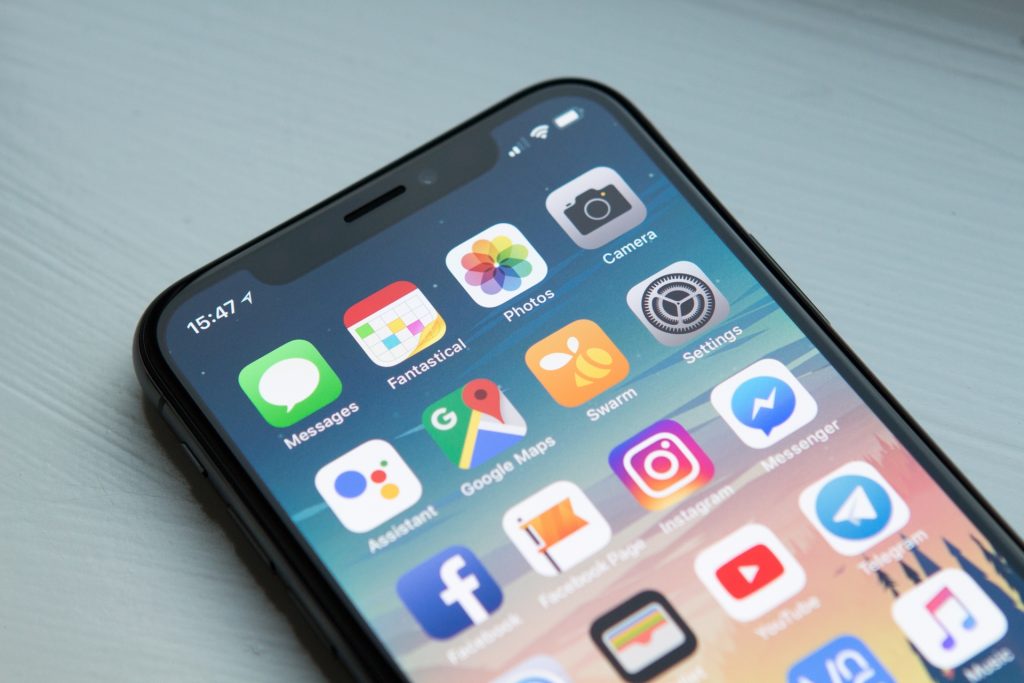Image provide by pxhere and licensed under Creative Commons
Developers, consulting firms and Fortune 500 CIOs have placed an increasing level of attention on mobile because usage trends and growth predictions are motivating them to pay attention. Developing for mobile first is now
MOBILE APPS STEADY SURGE
- There are over two million available apps publically available in both, Google Play and the Apple app store.
- 52% of all worldwide online traffic was generated through mobile devices.
- US adults spend on average, 3.5 hours per day on mobile devices.
- In 2019, mobile is predicted to outperform TV and become the medium which attracts the most minutes in the US
. Apps account for over 90% of internet time spent on smartphones.
Consider this last metric that nearly all time spent on a mobile device is on native applications. It is no wonder that large enterprises and startups alike consider app development an essential component for business success.
NATIVE APP DISTINCTIONS
There are distinctions of a native app over a browser-based experience. These details are essential for understanding universal adoption, so let’s explore the aspects of why native apps like Twitter, Instagram, Messenger, and YouTube are tremendously successful.
First, each app is built for a specific platform, either iOS or Android. The apps are downloaded and installed via an app store. Once installed and permissions granted, they have access to device hardware resources, such as location information, microphone, and camera functions.
SOOTH, FAST, FLAWLESS
- Native apps don’t require a network connection to function, and features will work offline offering much-appreciated convenience.
- They inherently perform better, and therefore take less time load a screen or to play a video.
- Offer better options for guaranteeing data integrity, privacy, and overall software protection.
- Google and Apple have strict user design and reliability standards. Studies show that these platform regulations contribute significantly to usability levels.
These are some of the benefits which have led billions of connected users to native mobile apps. This is how people are communicating, shopping, banking and playing. In 2019 and beyond, your target audience will be doing much of their living in native mobile apps.

SPECIALIZED DEVELOPMENT
If mobile app development is not part of your core business, most likely you will need third party partners assisting with your project load. Even established companies with internal IT resources will find it challenging to keep a dedicated group for building only mobile solutions. The primary reason, we design, develop, track and test mobile apps differently compared to web-based or hybrid systems.
DIFFERENTIATORS
The list below identifies key elements any project team would need in order to be proficient in mobile app development. Each would have its uniqueness depending on the two platforms.
- Excel in delivering high-value product releases at a rapid pace.
- Comprehensive knowledge about standard design approaches, including the constraints of touch-based controls and portrait screen orientation.
- Agile project management and consulting resources rooted in mobile first solutions.
- Experience with integration practices, regulatory compliance rules, and cloud-based scalability.
- Expertise in applying security balanced with accessibility.
- Quality assurance techniques include developing automated test scripts and functional use cases.
- Attend ongoing training to learn technical updates, design trends, and platform compliance guidelines.
FINAL RECOMMENDATIONS
Today more than ever, businesses are viewing native apps as the preferred distribution channel. We are strongly endorsing this trend because after 10+ years of mobile first experience we see native app development as offering the best options for providing value, customer engagement and user loyalty. Contact us to discuss your next project or prototype idea, and we can collaborate on building an experience that users love.


